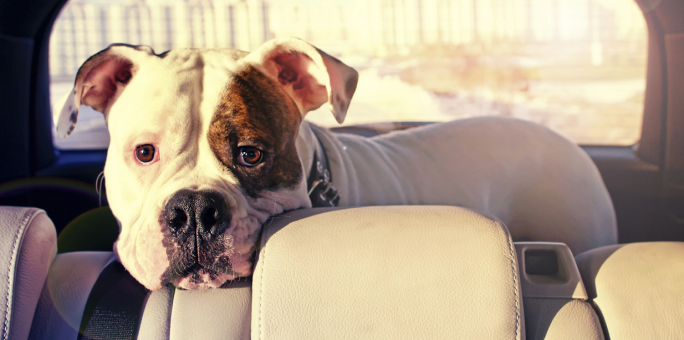
You understand car safety. You always make sure people are buckled up, keep your cell phone tucked away, obey traffic laws, and you’re a master of installing children’s car seats. But, consider this: what happens when you bring your pet along for the ride?
Pet travel safety is as important as human travel safety — if you’re in an accident, your pet may be as likely (or possibly more likely) to be seriously injured as you are. Consider these tips on preparing for a road trip and traveling safely when your pets are in the car:
- Use a safety harness or a secured carrier. Don’t leave your dog or cat unsecured in the car. A spooked cat may head straight for the driver’s pedals. Dogs can also be unpredictable. And, though it’s unpleasant to think about, an unsecured animal can become a projectile in the event of a crash. It’s important for both humans and pets to buckle up, so to speak. Pet supply stores typically have many varieties of travel harnesses available for dogs, and soft-sided carriers for smaller dogs and cats which can be easily secured in cars. Many are approved for airline use as well. Tip: Make sure you get your pet used to the harness or carrier before you leave on a big trip.
- Don’t forget the water. If you’re road tripping, your pets are going to get thirsty. And they don’t get the privilege of springing for the giant bottle of soda when you fill up the tank. Bring along the water in a travel container or bottle and a collapsible bowl so your pet’s thirst can be quenched.
- Don’t feed them before you leave. It may not be a good idea to feed your fuzzy friends a full meal before you leave on your journey. According to pet behavior expert Cesar Millan, pets aren’t immune to motion sickness. Wait until you stop for a bathroom break or gas refill, and use the time to walk your dog and feed your pet a small snack, he says.
- Don’t abandon your pet. Don’t leave your pet alone in a parked car on a hot or cold day. Even with the windows cracked open, a car can turn into a veritable furnace or fridge pretty quickly.
- Papers, Please. Having a collar with up-to-date identification tags should be step one of responsible pet ownership, but that goes double when traveling. Tags, a microchip, or another method of identification, could save the life of your pet. Plus, don’t forget vaccination records and other such documents from your veterinarian. If your pet gets ill while traveling, you’re going to need them, and some states require proof of vaccination at certain interstate crossings, according to the American Society for the Prevention of Cruelty to Animals (ASPCA). While that’s not a common problem, it’s better to be safe than sorry.
- Protect your car’s interior. Finally, if you find you like traveling with your pets, consider investing in rubber floor liners and waterproof seat covers, to help keep the mess of pet travel to a minimum.
Hopefully, these tips will help get you and your pets to and from your destination safely and securely.

